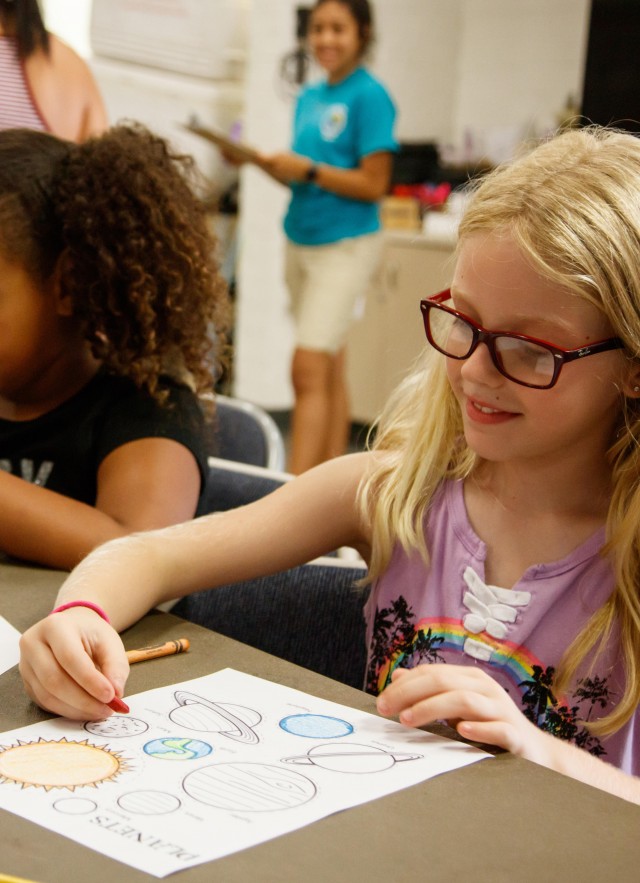Offsite Resources

Offsite Educational Resources
Connect your students to museum content and research right in your classroom, at your school site, or in your own backyard! Want to join a Community Science project with your class or plant a monarch waystation in your garden? We’ve compiled our most loved and frequently requested activities, lesson plans, “how to’s,” and educator resources designed to be used offsite below.
Community Science Projects
Use iNaturalist
iNaturalist is an online social network of naturalists, community scientists, and biologists built on the concept of mapping and sharing observations of biodiversity across the globe. Learn more about how to use iNaturalist:
- iNaturalist 101
- iNaturalist Educator Guide
- Create an iNaturalist Account
- Join an iNaturalist Project
- Take Good Photos for iNaturalist
- Create a Community Science Field Site
Find Some RASCals (Reptiles & Amphibians of Southern California)
Join the RASCals project to help us figure out where our local reptiles and amphibians live!
Follow the Butterflies: Painted Lady Butterfly Migration Project
Every year, thousands of painted lady butterflies migrate north, but we have very little data about this annual event. Using these data sheets, upload your findings via Google Form or submit photos to the associated iNaturalist project.
Search for SLIME (Slugs Living in Metropolitan Environments)
Our Malacology Department needs your observations of snails and slugs! Add photos of terrestrial gastropods around your neighborhood to our SLIME iNaturalist project.
Survey for Southern California Squirrels
Help the Natural History Museum track the changes in squirrel distribution in our region. Use this lesson plan to guide student learning and this field guide to help identify squirrels you find.
using the outdoor classroom
Nature Observations & Journaling
These activities and lesson plans encourage exploration of the outdoors with structured prompts, discussions, and field journals:
- Using the Outdoor Classroom: Tips for Nature Observation
- Make Your Own Nature Journal
- Create a Nature Memory Map
- How to Take a Nature Walk
- Grade Pre-K - 5 | Outdoor Exploration Guide
- Grades K - 5 | Place in the World: Nature Study Lesson Plan
- Grades K - 12 | What We Are: Nature Poetry Lesson Plan
- Grades 2 - 12 | Art Lens Nature Walk: Lesson Plan
- Los Angeles Birding Guide
- Birding for Beginners Resource List
- Grades 2 - 12 | Sounds of Nature: Bird Calls Lesson Plan
- Build a Bee Hotel
- Urban Wildlife & Scientific Illustration Resource List
- Set Up a Track Station
Garden Discoveries
Looking for resources to start your own garden? See below for suggested gardening materials and related lesson plans:
- Plant a School Garden with California Native Plants
- Grades K - 8 | Soil Test in a Jar Lesson Plan
- Grades 3 - 6 | Square Foot Gardening and Companion Planting: Lesson Plan & Planning Card Sample
- Plant a Monarch Waystation
- Grades K - 12 | Meeting New Neighbors: How to Study Your Butterfly Waystation Lesson Plan
Museum Collections
Bring the museum collections to you with these lesson plans and how-to's:
-
Becoming Los Angeles Lesson Plans (meets Common Core History-Social Science Framework)
-
Grade 3 | Continued Traditions: Explore traditions of the Gabrielino-Tongva people and how those traditions live on today. Become a museum archaeologist to examine artifacts and write, draw, and record your findings.
-
Grade 4 | Coming to California: Discover how 49ers traveled to California during the Gold Rush by examining museum objects and historical photographs. Investigate one migrant's journey to California in search of riches.
-
-
Dinosaur Hall Lesson Plans & Activities (meets NGSS and Common Core ELA, Math, and VAPA Standards)
-
Grade 1 | Adaptation Sensation: Compare adaptations of modern-day animals with fossil specimens to determine how ancient animals used to survive.
-
Grade 4 | The Dino Diner: Use math and science to deliver excellent customer service to some paleo patrons!
-
Grade 7 | Shaping Dinosaurs: Use dinosaurs as a topic to understand tessellations and how to calculate area and perimeter.
-
High School | Amazing Adaptation: Use a Tree Map to connect observations, inferences, and conclusions about a specimen, then consider how natural selection played a role in that specimen's evolution.
-
Make Your Own Dinosaur Shadow Puppet (suggested for elementary, middle, and high school)
-
Make Your Own Trace Fossil (suggested for elementary, middle, and high school)
-
Skype a Scientist: Connect with researchers and scientists from all over the world for virtual Q&As
NHMLAC Connects
Think social distancing with dinosaurs and mammoths and connecting with nature and community science right outside your own door. The museums want to know: What Blows Your Mind? Connect with inspiring educators, scientists, and each other for virtual adventures. Access rich school curriculum and activities to do with your family at home. Participate in exciting crowd-sourced science and social media campaigns.
Explore natural and cultural wonders from home on NHMLAC Connects!